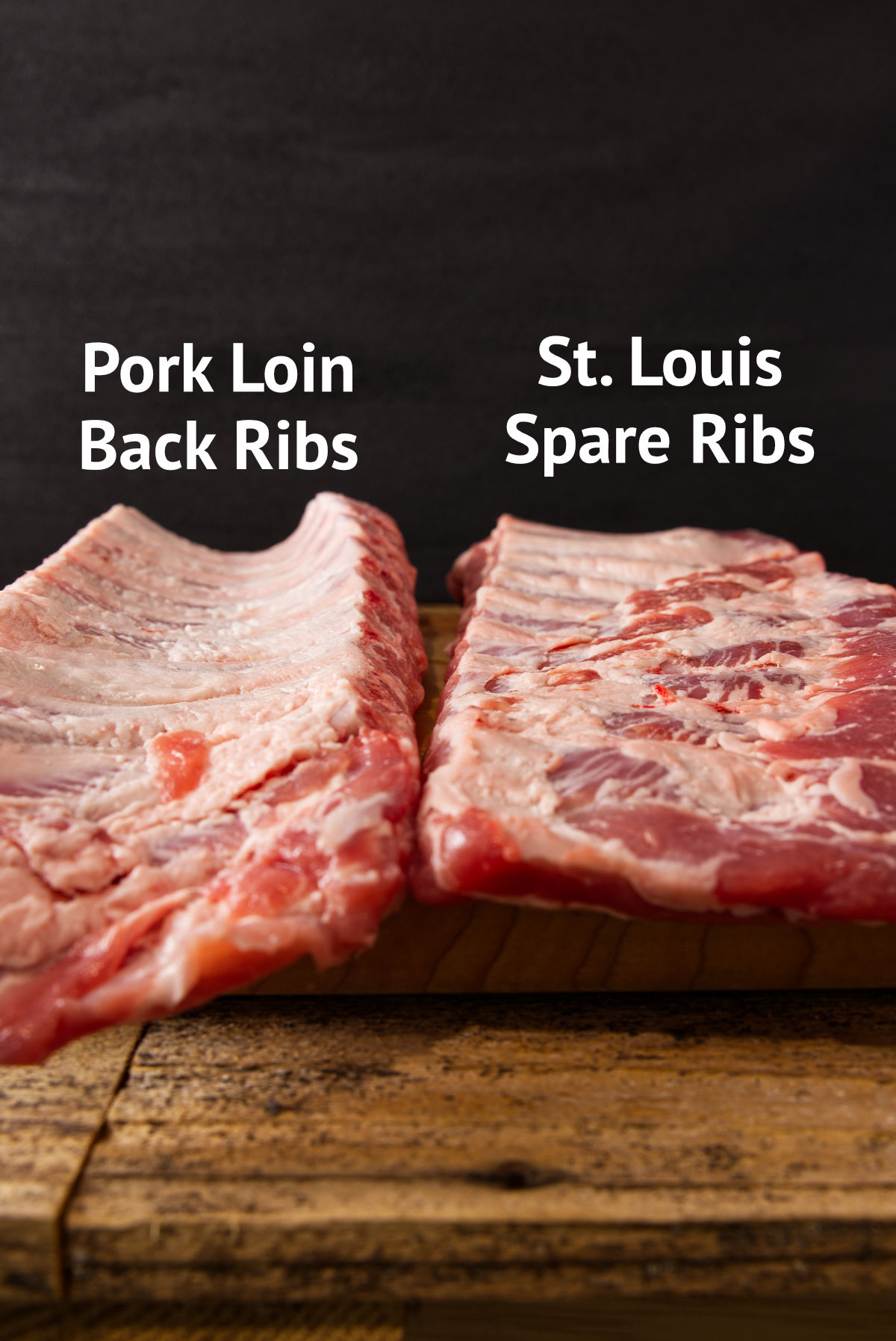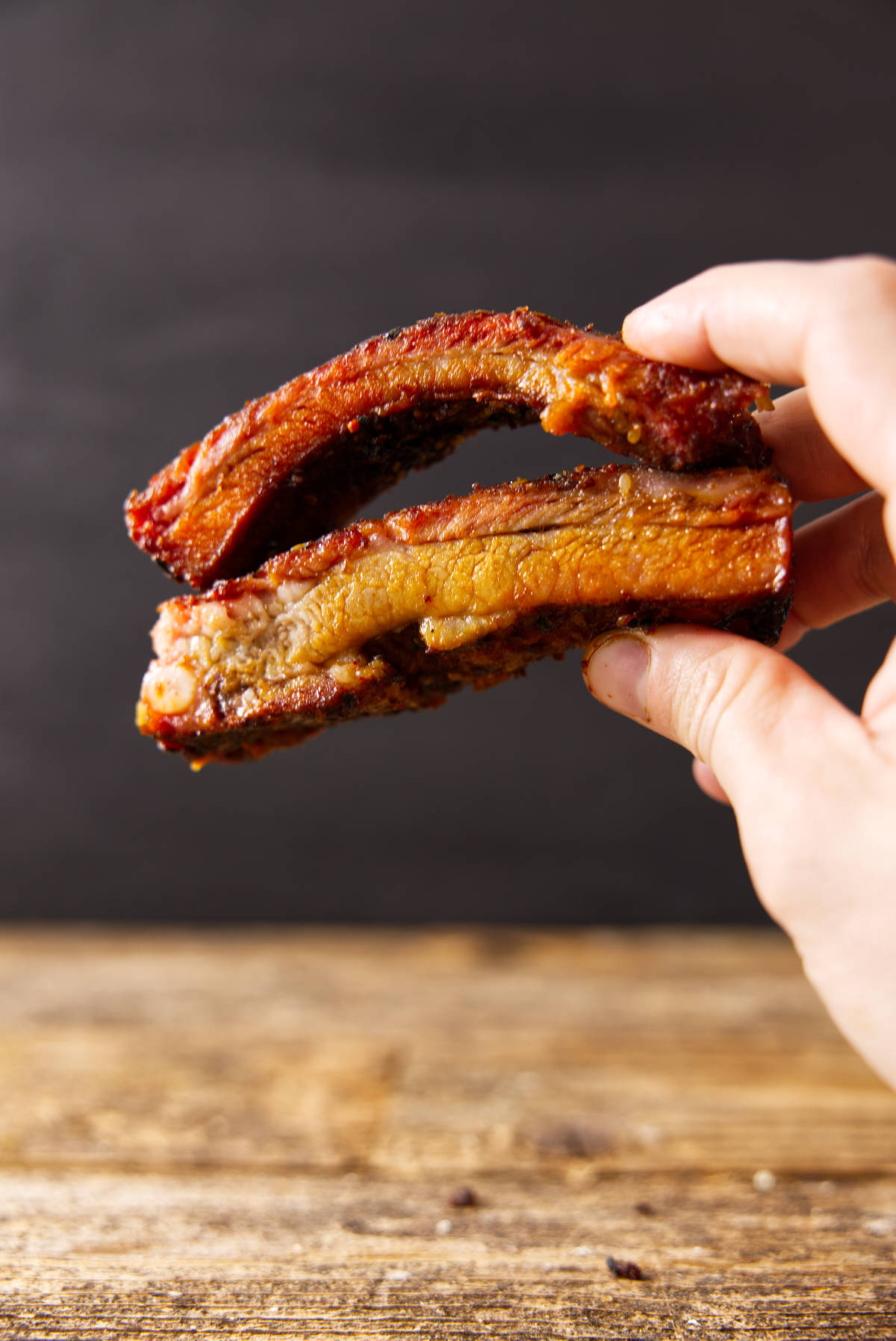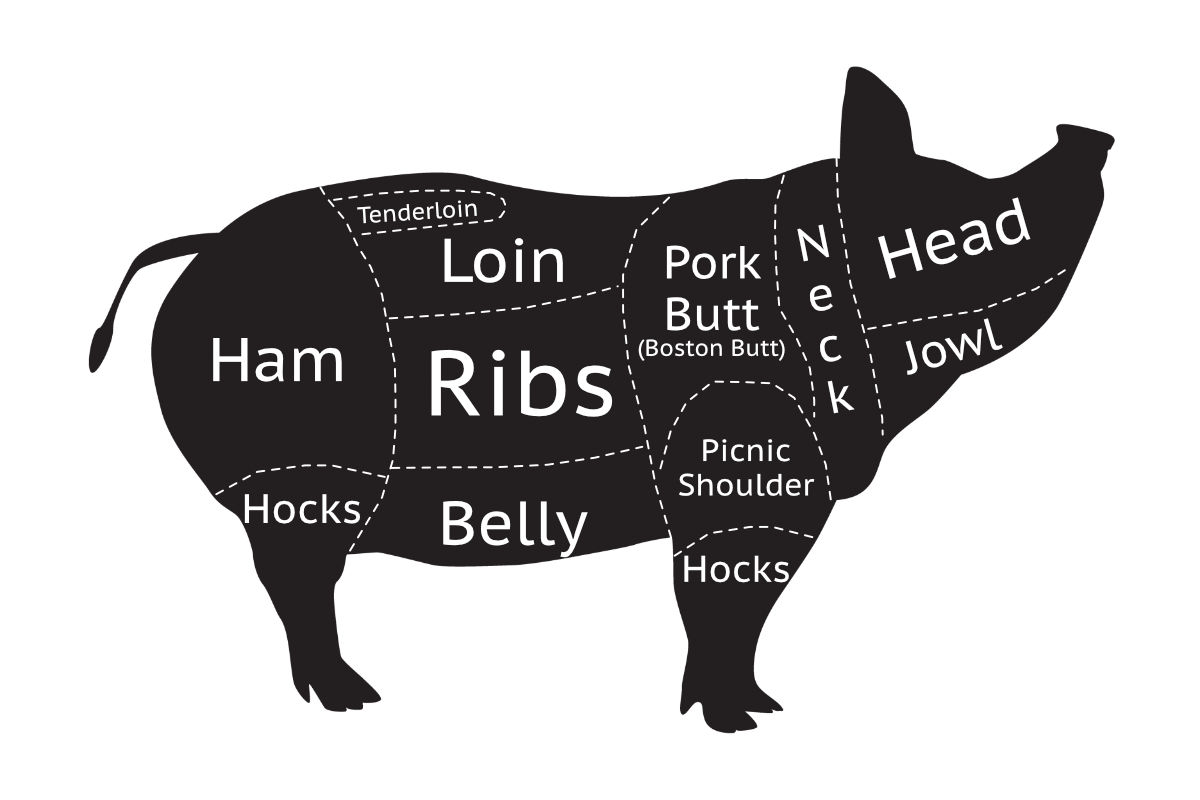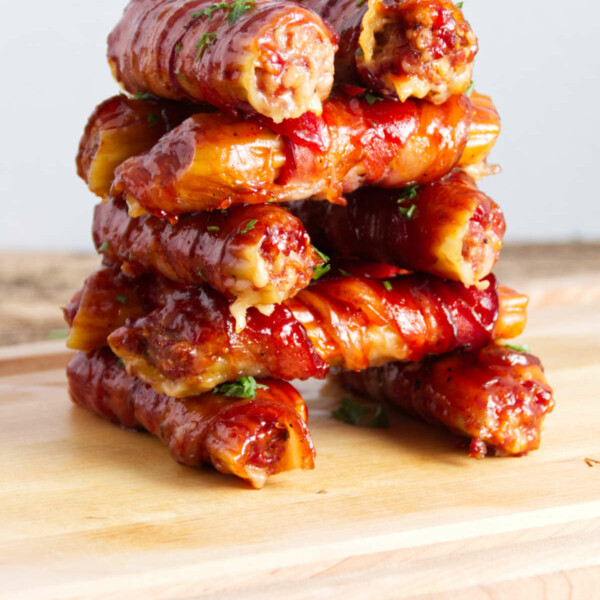Pork Loin Back Ribs vs St Louis (Baby Back vs St Louis)
on May 27, 2024, Updated Jun 09, 2024
This post may contain affiliate links. Please read our disclosure policy.
The ultimate rib showdown, Pork Loin Back Ribs vs St. Louis ribs, these two BBQ heavyweights bring something different to your cookout. Pork loin back ribs come from the area near the pork loin while St. Louis-style ribs come from lower on the pig.
These two different ribs bring their own flavor and texture to the game. But what sets them apart? In this guide, we’ll dive into the difference between each cut, explore their distinctive flavor profiles, and uncover the best cooking techniques to make your ribs the talk of the town.

🔑 Key Differences Baby Back vs St. Louis
Both cuts are delicious, you really cannot go wrong! I recommend cooking both and doing a side-by-side comparison to find your favorite! But if you don’t feel like cooking several slabs of ribs, these key points below might help you pick. Bonus points: read our guide about pork loin back ribs vs baby back ribs.
Cut and Shape
- Pork loin back ribs: These ribs are cut from the back of the pig near the spine and have a curved shape. They are lean and have a higher meat-to-bone ratio with more meat on top of the bone rather than between the bone.
- St. Louis ribs: These ribs are trimmed down from spare ribs, which come from the belly of the pig. They are trimmed to remove the rib tips and excess cartilage, resulting in a more flat, rectangular, and uniform shape compared to pork loin back ribs.
Meatiness
- Pork loin back ribs: Known for their tenderness and succulence, pork loin back ribs are leaner with less fat and connective tissue compared to St. Louis ribs. This can result in a slightly firmer texture but also makes them quicker to cook and less prone to becoming overly fatty.
- St. Louis ribs: Known for their meatiness and rich flavor, thanks to the higher fat content and marbling throughout the meat. They have more meat between the bones than baby back ribs. The extra fat contributes to a juicier end result and a more tender texture when cooked low and slow.
Fat Content
- Pork loin back ribs: These ribs tend to have less fat and marbling compared to St. Louis ribs, resulting in a cleaner, slightly lighter flavor profile. They offer a more delicate pork flavor that can be enhanced with seasoning and sauces.
- St. Louis ribs: With their higher fat content and marbling, St. Louis ribs deliver a richer, more indulgent flavor that pairs well with bold spices and sauces. The extra fat also helps keep the meat moist and tender during the cooking process.

🐖 What Are Pork Loin Back Ribs?
Pork loin back ribs, often referred to as baby back ribs, is a cut that comes from the back of the pig, specifically from the section where the backbone meets the rib cage. In fact, they come from the area right next to the loin, and since we are talking about it, check out our recipe for brined and smoked pork loin and learn the secrets about how to reheat a pork loin properly.
These ribs are known for their tenderness, juiciness, and higher bone-to-meat ratio. Baby back ribs have more meat on top of the bones rather than between and are leaner than St. Louis spare ribs.

One of the defining characteristics of pork loin back ribs is their curved shape, which follows the natural contour of the pig’s spine. You can instantly spot baby back ribs based on how curved they are compared to spare ribs.
In terms of flavor, pork loin back ribs offer a great balance of sweetness and savory notes that take up the flavor of the marinade or rub perfectly. The leaner meat allows for quicker cooking times, and they will stay juicy if cooked properly.
Cooking pork loin back ribs requires attention to detail and preparation. Whether you’re smoking, grilling, or oven-roasting, low and slow is the name of the game. You can dial in your cook so that you end up with meat that falls off the bone, or if you prefer some bite and structure to your meat, that is easily tuned.
Coat the ribs in a dry rub or marinate them overnight to enhance the meat’s natural flavors, or slather the ribs in your favorite BBQ sauce for a sweet and tangy finish. Or do some combination of them all!
🐷 What Are St. Louis Style Ribs?
St. Louis-style ribs are a barbecue favorite known for their rich flavor and meaty texture. St. Louis ribs are a trimmed version of spare ribs, which are cut from the ribs near the belly of the pig and contain a bit more fat and connective tissue compared to baby back ribs.
To create St. Louis-style ribs, the spare ribs are trimmed to achieve a more uniform and rectangular shape. This involves removing the rib tips and excess cartilage along the bone, resulting in a perfect rack of ribs that cooks evenly and presents beautifully on the grill and in competitions.
In terms of taste, St. Louis-style ribs boast a robust pork flavor with a slightly fattier profile compared to pork loin back ribs. This extra fat contributes to a succulent and juicy rib when cooked low and slow, whether smoked, grilled, or roasted in the oven.
These ribs can stand up to bold flavors and slow cooking methods, resulting in tender, mouthwatering ribs that are sure to please even the most discerning barbecue aficionado. So fire up the grill and get ready to indulge in the irresistible St. Louis-style ribs.

😉 Tips for Awesome Ribs!
- Preparation is Key: Start by prepping your ribs. I recommended that you remove the membrane for better seasoning penetration and trim any excess fat even when cooking. If you leave the membrane, the ribs won’t be as tender.
- Low and Slow Cooking: Cook your ribs low and slow at 225°F to achieve that fall-off-the-bone tenderness. 3-2-1 ribs are popular and an easy cooking method. If you prefer more structure to your ribs, modify the process and do the 2-2-1 method.
- Use a Flavorful Rub: Elevate the taste of your ribs by applying your favorite rub. Experiment with different spice blends to find your perfect combination.
- Marinade Overnight: Try marinading your ribs overnight to make them extra juicy and flavorful.
- Wrap or Spritz for Moisture: To keep your ribs moist and tender, consider wrapping them in foil halfway through cooking or spritzing them with apple juice or cider vinegar. This helps lock in moisture and prevents the meat from drying out.
CONNECT WITH A LICENSE TO GRILL!
Be sure to follow us on our social media accounts.
Did you make this recipe? Tell us about it in the comments below!



